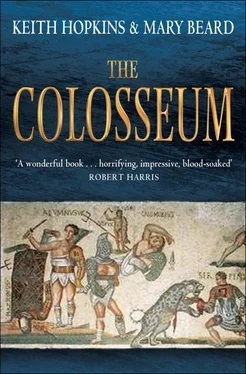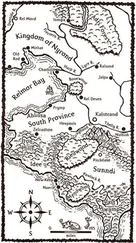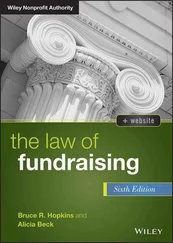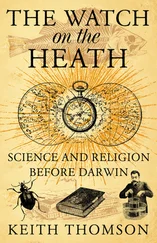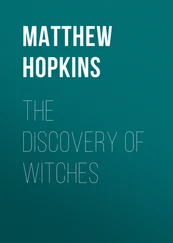Keith Hopkins - The Colosseum
Здесь есть возможность читать онлайн «Keith Hopkins - The Colosseum» весь текст электронной книги совершенно бесплатно (целиком полную версию без сокращений). В некоторых случаях можно слушать аудио, скачать через торрент в формате fb2 и присутствует краткое содержание. Город: London, Год выпуска: 2011, ISBN: 2011, Издательство: Profile Books, Жанр: История, на английском языке. Описание произведения, (предисловие) а так же отзывы посетителей доступны на портале библиотеки ЛибКат.
- Название:The Colosseum
- Автор:
- Издательство:Profile Books
- Жанр:
- Год:2011
- Город:London
- ISBN:9781846684708
- Рейтинг книги:3 / 5. Голосов: 1
-
Избранное:Добавить в избранное
- Отзывы:
-
Ваша оценка:
- 60
- 1
- 2
- 3
- 4
- 5
The Colosseum: краткое содержание, описание и аннотация
Предлагаем к чтению аннотацию, описание, краткое содержание или предисловие (зависит от того, что написал сам автор книги «The Colosseum»). Если вы не нашли необходимую информацию о книге — напишите в комментариях, мы постараемся отыскать её.
The Colosseum — читать онлайн бесплатно полную книгу (весь текст) целиком
Ниже представлен текст книги, разбитый по страницам. Система сохранения места последней прочитанной страницы, позволяет с удобством читать онлайн бесплатно книгу «The Colosseum», без необходимости каждый раз заново искать на чём Вы остановились. Поставьте закладку, и сможете в любой момент перейти на страницу, на которой закончили чтение.
Интервал:
Закладка:
THE COLOSSEUM REMEMBERED
The story of the lifting of this collective amnesia and of the rediscovery (or reinvention) of the monument as a tourist shrine to gladiatorial combat extends over centuries of the modern history of the city of Rome: from the feudal warfare of the medieval town, through dynastic rivalries of popes and cardinals, repeated invasions (of foreign travellers and pilgrims as much as of hostile armies), to the re-creation of the city in the late nineteenth century as the capital of a newly reunited Italy. Throughout this time, while the imperial palace on the Palatine crumbled, as Byron noted, into insignificance, while the Roman Forum gently sank under what was aptly called a ‘cow pasture’ (‘ Campo Vaccino’ ), the Colosseum still stood reasonably proud. Albeit half buried in earth itself, on a more or less greenfield site as Rome’s builtup area contracted, and sometimes flagrantly misunderstood (at least by our standards), it remained one of the most striking ancient monuments of the city – rivalled only by the great columns of Trajan and Marcus Aurelius.
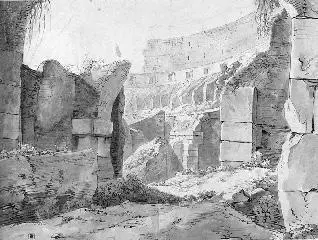
We may now be thankful that some of the more breathtaking schemes for its preservation or re-use did not get off the ground. In the sixteenth century, for example, Pope Sixtus V, as Murray’s Handbook observed in 1843, had planned the conversion of the Colosseum into a wool factory. It was a project somewhat reminiscent of those of the more enlightened British nineteenth-century industrialists and was, in fact, linked to a much bigger scheme of what we would call ‘regeneration’ of the area around the building. The plans drawn up by Sixtus’ architect, Domenico Fontana, sited the industrial plant on the ground floor of the monument, with attached housing for the workmen on the upper levels. But the immense cost of the proposals meant that they were abandoned after the Pope’s death; instead, in 1594, a small glue factory moved in. Radical as it seems, in the long term such a conversion might inadvertently have contributed to the Colosseum’s better preservation (that is certainly what the French scholar Mabillon thought, when he wrote some years later that ‘If Sixtus had lived, we would now have that amazing amphitheatre intact’). Not so the earlier version of Sixtus’ plans, which seem to have envisaged the total demolition of the building in a major road scheme. This proposed obliteration rather exceeds the rapaciousness of later English grand tourists. ‘If the Colosseum were portable, the English would carry it away’ was one eighteenth-century joke. They presumably often returned home with a fragment of souvenir masonry in their pockets.
In fact the monument was repeatedly ‘carried away’ in a different and less damaging sense. From the Renaissance onwards, it provided a model for classicising architects. Not only was it drawn, redrawn and reconstructed on paper, it was recreated in stone – particularly the characteristic sequence of the different architectural orders on its perimeter wall. The stamp of the Colosseum is to be found in the design of many an Italian palazzo . As early as 1450, the renaissance architectural guru Leon Battista Alberti incorporated motifs from the building into his Palazzo Rucellai in Florence. In Rome a century later, Antonio da Sangallo, who had himself made detailed drawings of the Colosseum, replicated details in his design for the Palazzo Farnese. Sangallo’s father had already taken the orders and articulation of the Colosseum as the inspiration for the courtyard of the Palazzo Altemps (just off the Piazza Navona, and now open to the public as a museum of Roman sculpture).
By the nineteenth century, imitation was as much about function as form. If the ghost of a Roman amphitheatre lies somewhere behind every circular concert hall, the very idea of the Colosseum as a place of popular Roman entertainment is paraded in all the venues world-wide that were built with that name. From South Dakota to Tokyo, there are literally thousands of sports facilities, music halls and theatres graced with the title ‘Coliseum’ (the spelling gives away the nineteenth-century origin of this fashion). Many of these show no trace whatsoever in their design of their Roman origins. But the London Coliseum – now the home of the English National Opera, but which started life in 1904 as a more down-market variety hall – is full of allusions to Rome, even specifically to the Colosseum itself. There are mosaics on the floors; the original carpets carried the distinctive logo of the Roman state: ‘SPQR’ (‘Senatus PopulusQue Romanus’ or ‘The Senate and Roman People’); sculptures on the exterior feature some, admittedly docile, lions; and the decoration of the ceiling includes a trompe l’oeil version of the famous awning used to keep the sun off the spectators in the Colosseum and other amphitheatres. Sir Oswald Stoll, whose brainchild it was, is supposed to have hoped that it ‘would be as worthy of London today as the ancient amphitheatre of Vespasian was of Rome’. As always with these wondrous monuments of international renown, part of their fame and familiarity stems from the fact that they have spawned replicas and creative imitations far beyond their original home.
It is now impossibly complicated to trace the precise stages by which the Colosseum was transformed in popular imagination and in popular use from a temple of demons and an arena of necromancy to a romantic ruin, a memorial of gladiatorial combat and Christian martyrdom, and an archaeological monument. In detail, its whole history since antiquity is a series of bright ideas, dead ends, failed schemes and repeated re-interpretations and re-appropriations. But the key to understanding what has happened to the Colosseum over the last millennium or so and the apparently wildly conflicting ways that it has entered Western culture is to pare those details down to their essentials. Since the end of antiquity, there have basically been just four main interest groups claiming the Colosseum for themselves: robbers and re-users; Christians; antiquarians and archaeologists; and – surprising as it may now seem – botanists. The monument’s history has been largely determined by the struggles of these partisans; its changing image has been the consequence of the dominance of one interest over the others.
ROBBERS AND RE-USERS
By the sixth century, even if it still hosted the occasional animal hunt and was kept partially in working order, the Colosseum was almost certainly in a dilapidated state. Without regular upkeep, dilapidation gave way to ruin. Its surviving structure was an obvious and easy target for those who wanted building materials, whether on a small scale (heaving off a block of travertine for use as a doorstep) or in order to provide the stuff of some of the grandest building schemes of the papal court. For most of the Middle Ages and early Renaissance the Colosseum was not so much a monument as a quarry.
To describe this activity as ‘robbery’ is to give the wrong impression. For the most part, there was nothing illegal or unofficial about the removal of this stone. The Colosseum’s succeeding owners (a motley crew, which included feudal warlords, the local Roman council and various organisations of the Catholic Church) regularly gave or sold permission for ‘quarrying’. Papal records up to the seventeenth century repeatedly include the formula ‘ a cavar marmi a coliseo ’ (‘to quarry stone from the Colosseum’). The scale of the removal is now hard to contemplate. One entry in the records notes that in just nine months in 1452 under Pope Nicholas V 2522 cartloads of stone were removed; it was apparently intended for use in lime-making in his schemes for the Basilica of St Peter’s. Only a few years before, in 1448, one of the most learned humanists, Poggio Bracciolini, had ruefully observed, not without some exaggeration, that most of the Colosseum had been turned into lime. The same point was made rather more wittily in a well-known quip about the Barberini family’s plundering of the monuments of classical antiquity, in particular the famous temple known as the Pantheon: ‘ Quod non fecerunt barbari, fecerunt Barberini ’ (less neatly in English, ‘What the barbarians did not do, the Barberini have done’). Papal records from the seventeenth century show Pope Urban VIII allowing this same family (of which he himself was a member) to take fallen travertine from the Colosseum for the building of their Palazzo Barberini.
Читать дальшеИнтервал:
Закладка:
Похожие книги на «The Colosseum»
Представляем Вашему вниманию похожие книги на «The Colosseum» списком для выбора. Мы отобрали схожую по названию и смыслу литературу в надежде предоставить читателям больше вариантов отыскать новые, интересные, ещё непрочитанные произведения.
Обсуждение, отзывы о книге «The Colosseum» и просто собственные мнения читателей. Оставьте ваши комментарии, напишите, что Вы думаете о произведении, его смысле или главных героях. Укажите что конкретно понравилось, а что нет, и почему Вы так считаете.
